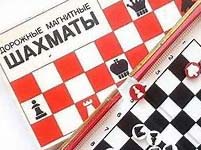|

|
What's with the name?
It resembles the Russian word for chess: WAXMATbI.

Wow. That's pretty deep...
Not really -- it wasn't on purpose (until later). The original name was VAXMAN, a lame attempt to camouflage the program as a DEC VAX management utility.
DEC VAX, eh? How old is VAXMAN, anyway?
I started to dabble in computer chess around 1980, a year or two after I learned to program in BASIC. My first program took 20 seconds just to generate the 20 moves from the starting position. I soon ditched BASIC and started learning machine languages (6502, Z80, MACRO-11...) In 1986, I finally settled on the IBM PC as my platform of choice, C as the programming language, and released the first public version of WAXMAN in 1990.
What cutting-edge techniques does WAXMAN use?
Mailbox board representation (12x10), incremental attack updates, alpha-beta search with iterative deepening, aspiration windows, null-move heuristic, killer moves... Later on, I added static null pruning and razoring (i.e., futility pruning). The newer versions also use internal iterative deepening and late-move reductions/pruning.
No bitboards?
Not exactly bitboards as such, but there are bitmaps summarizing various aspects of the position in similar ways -- white pieces, black pieces, attacked pieces, defended pieces, pieces en prise, etc. So when we need, say, a list of pinned enemy pieces, it doesn't take much work.
Sounds like WAXMAN is still a 16-bit program under the hood!
Very much so. The basic design goes back to 1986 and is very 16-centric: 16 white men, 16 black men, 16 pawns... Everything revolves around arrays of pieces rather than arrays of board squares.
How strong is WAXMAN?
WAXMAN's rating on the CCRL rating list is about 2,440. That's against other chess programs -- no idea how CCRL's list correlates to human ratings.
| ©1990-2022 Ivan Bacigal |